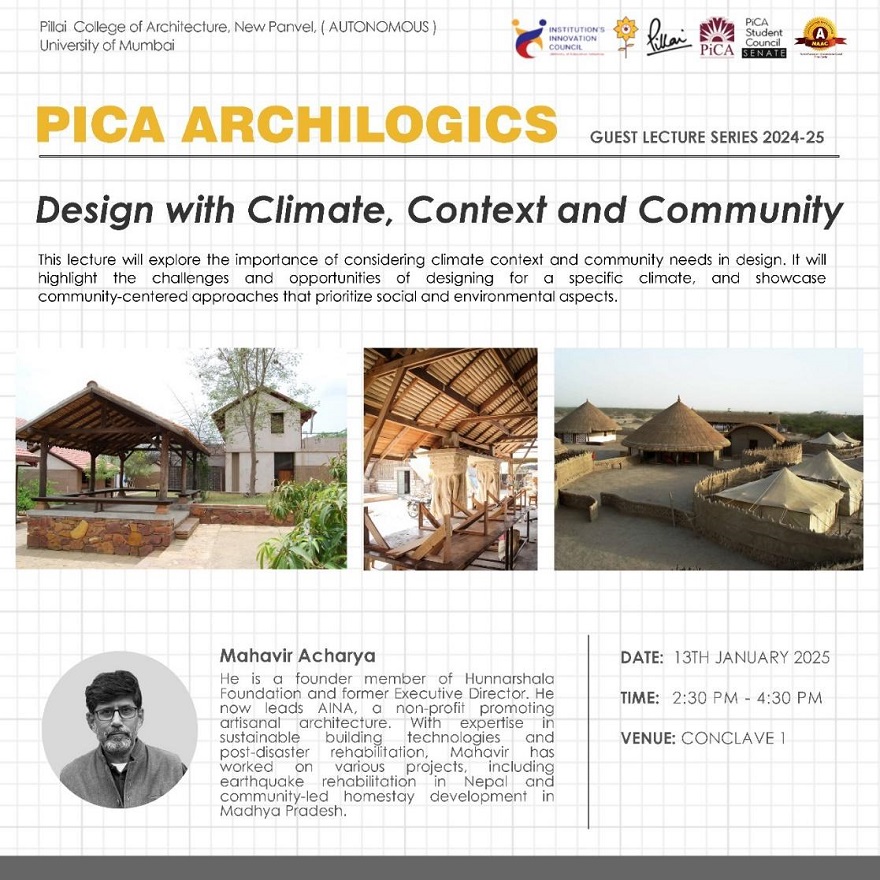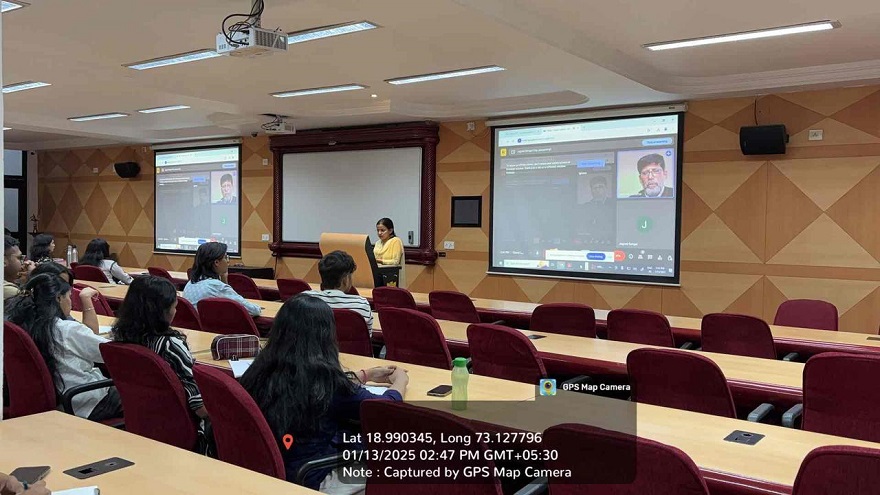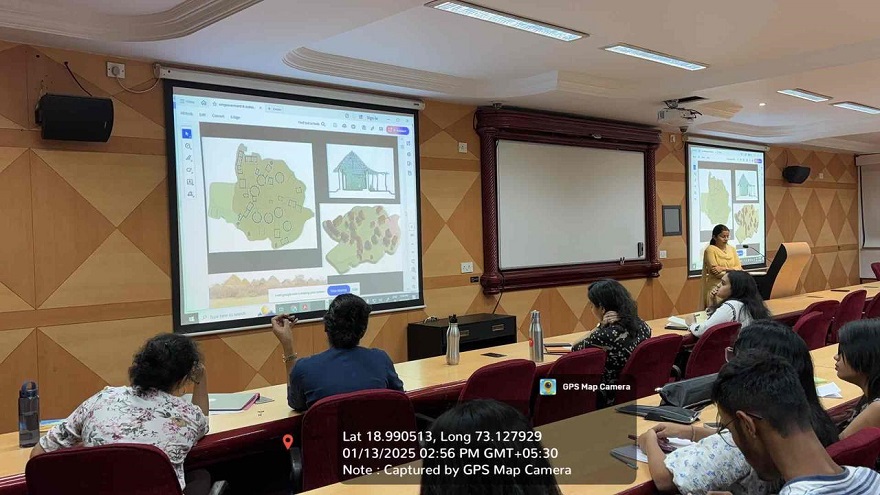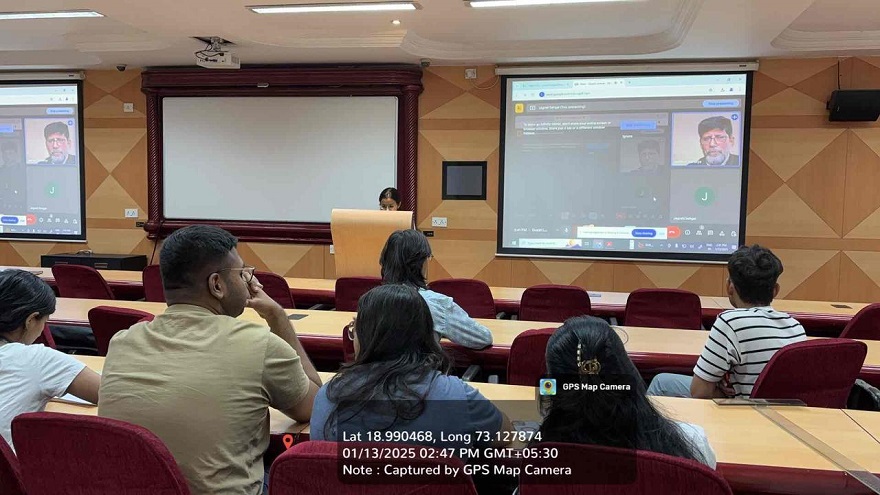| Event | Design with Climate, Context and Community |
| Subject | Architectural Design IV |
| Session | II |
| Year | 2024-25 |
| Date | 13th January, 2025 |
| Time | 2:30 p.m. - 4:30 p.m. |
| Venue | Conclave I |
| Co-Ordinator | Prof. Jagrati Sehgal |
| Faculties | Prof. Neha Sayyed, Prof. Jasmine Bhavsar, Prof. Suvarna Thakare, Prof. Vikram Dhumal, Prof. Moushumi Kulkarni, Prof. Prathamesh Deshpande |
| Guest Speaker | Mahavir Acharya |
| No. of Students | 64 |
| No. of Faculties | 09 |
The event took place on 13th January 2025, Monday: 2:30 a.m. – 4:30 p.m. It was very insightful and engaging lecture on “Design with climate, context and community”. The expertise and thoughtful presentation were truly captivating, and we are incredibly grateful for the knowledge and perspectives that was shared.
The guest lecture titled “Design with Climate, Context and Community” highlighted the importance of integrating local context and community needs into the design process, with climate responsive approach. It emphasized how effective design goes beyond aesthetics and functionality, focusing on creating solutions that are socially, culturally, and environmentally relevant. By considering the community’s values and challenges, designers can create more sustainable and impactful outcomes. The lecture reinforced the idea that design should be a collaborative effort that serves both people and place.
Mr. Mahavir Acharya is an engineer by training and one of the founder members of Hunnarshala Foundation and was Executive Director. He just now leads AINA (artisan in architecture) , a not-for-profit organisation promoted by Hunnarshala.
The architecture and community design across various regions, such as Kutch, Bihar, Muzaffarnagar, Gujarat, and Uttarakhand to Nepal, emphasize the importance of sustainable building practices and community involvement. In Kutch, the round shape of Bhunga structures is vital in earthquake zones, while the use of vibrant colors and adobe reflects the cultural richness. Aabhat, the concept of collaborative community design, strengthens this ethos. In Bihar, bamboo is used creatively for construction with minimal tools, showcasing the beauty and practicality of the material. Muzaffarnagar values brick construction, with intricate roof designs and patterns, while Gujarat’s focus on rammed earth emphasizes eco-friendly methods. Karigarshala in Gujarat highlights the essential role of artisans in the design process, ensuring their involvement in crafting spaces. In Uttarakhand and Nepal, dry stone masonry ties into traditional construction techniques, supporting sustainability. The overall theme across these regions is the integration of folk traditions with modern sustainability, creating spaces that are both functional and rooted in the local culture.
The key takeaway from this lecture is the importance of integrating traditional construction methods in modern times. Across different regions like Kutch, Bihar, Muzaffarnagar, Gujarat, Uttarakhand, and Nepal, the use of local materials, community collaboration, and eco-friendly techniques highlight the value of culturally-rooted architecture. The focus on sustainable building practices, such as earthquake-resistant designs, bamboo construction, and rammed earth, demonstrates how traditional knowledge can be leveraged to create functional, durable, and environmentally conscious spaces.






